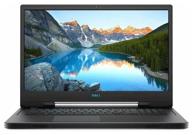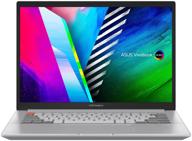
Review on 15.6" Lenovo ThinkBook 15 G2-ITL 1920x1080, Intel Core i5 1135G7 2.4 GHz, RAM 8 GB, SSD 256 GB, Intel Iris Xe Graphics, Windows 10 Pro, 20VE009BRU, Mineral Grey by Radko Marinov ᠌

Wonderful quality, one hundred percent satisfied!
1) Download the Windows 10 installation tool, an 8 GB flash drive for the installation, and 8 GB of free disk space on the computer you intend to use to install Windows 10. You'll also need connection to the internet. 2) Locate the appropriate SSD drive drivers on the manufacturer's website (usually located at /downloads/driver-list/component) and install them. For the full expression, please use: name=%D0%96%D0%B5%D1%81%D1%82%D0%BA%D0%B8%D0%B9%20%D0%B4%D0%B8% D1%81%D0%BA 3) Extract the drivers to a USB device (you can reuse the same one). At the time of first setup, drivers will be required; otherwise, the installer will be unable to detect the SSD. 4) I had no sound after installing Windows 10, so I went to itl/20ve/20ve00g0ru/mp1ypegp/downloads/driver-list/component? name=%D0%90%D1%83%D0%B4%D0%B8%D0%BE%D1%81%D1%82%D0%B5%D0%BC%D0%B0 to grab the driver I needed. Just that. In addition, the Windows 10 ESD electronic license is commercially available. It's 1450, but you can figure that out on your own. Step 1 can be completed without ever purchasing a license, as clear instructions are provided by license vendors.
- Minimalist in design; no bloatware prevents installation of your preferred operating system.
- The Windows 10 installation process is not documented. In the following comment, I address this flaw:
New products
Comments (0)
Top products in 📱 Tablets
Another interesting products

27" Apple iMac All-in-One (Retina 5K, Mid 2020) MXWT2RU/A, 5120x2880, Intel Core i5 3.1GHz, 8GB RAM, 256GB SSD, AMD Radeon Pro 5300, MacOS, Silver

13 Review

Notebook DELL G7 17 7790 (1920x1080, Intel Core i5 2.4 GHz, RAM 8 GB, SSD 256 GB, HDD 1000 GB, GeForce GTX 1660 Ti, Win10 Home)

26 Review

Refurbished 2019 Apple iMac with Retina 4K/3.6 GHz Intel Core i3 🖥️ Quad-Core (21.5-Inch, 8GB RAM, 1TB) - Silver: Ultimate Deal on a Powerful Renewed Desktop!

13 Review

14" ASUS Vivobook Pro 14X OLED N7400PC-KM059 2880x1800, Intel Core i5 11300H 3.1GHz, RAM 16GB, DDR4, SSD 512GB, NVIDIA GeForce RTX 3050, no OS, 90NB0U44-M01450, silver

26 Review






